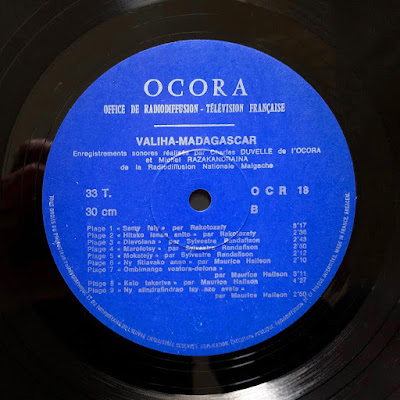IRAN
Musique Persane Vol. 2 – Vogue EXTP 1034, recorded by Noël Ballif in 1955 (Vinyl 7 inch, 45 RPM)
This 45 rpm, recorded in Iran in 1955, features a delicate solo on the long-necked tar lute (A1), an instrument used to convey intimate, reflective and meditative states. The lute, which arrived at its modern form in the 18th century, is central to Persian culture and identity. (B1) features a solemn and inspired prayer sung by a morshed (guide) during an ancient traditional ritual held in a Zurkaneh (“house of force”), where athletes train in collective physical exercises and are encouraged to develop moral and spiritual values like modesty and purity of heart; and (B2) an Azan call to prayer.
Ce disque 45 tours, enregistré en Iran en 1955, présente un solo délicat sur le luth tar (A1) qui mène à des états contemplatifs et méditatifs. Le tar, qui prit sa forme actuelle au 18ème siècle, tient une place de choix dans la culture et l'identité persane ; un guide morshed chantant une prière inspirée et solennelle à l'occasion d'un rituel traditionnel zourkaneh (« maison de la force ») (B1) où les athlètes s'entraînent à des exercices physiques collectifs tout en développant des valeurs morales et spirituelles, telles que la modestie et la pureté de cœur; suivi d'un appel à la prière Azan (B2).
Download
Our other Persian/Iranian music posts:
Music of Iran – Santur Recital – Nasser Raster-Nejad – Lyrichord LLST 7135 here
Traditional Persian Music – Ahang Rooz Record Company here
Traditional Persian Music – Ahang Rooz Record Company here
Photograph below is from L'Etrange et le Merveilleux en Terre d'Islam catalogue for the April-July 2001 exhibition held at the Louvre Museum, Paris:


































